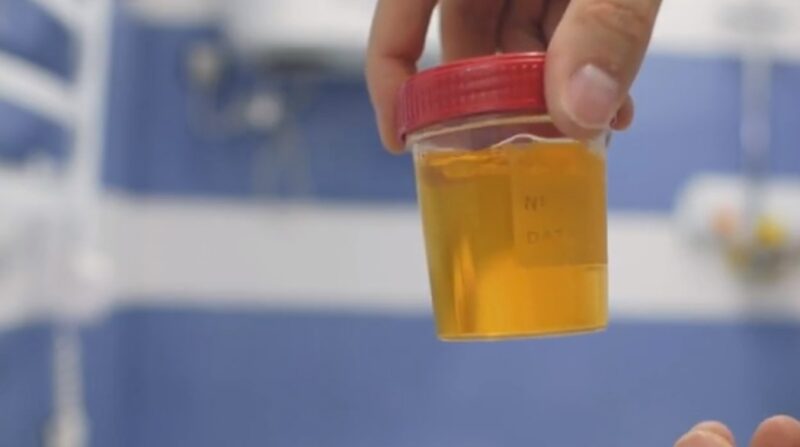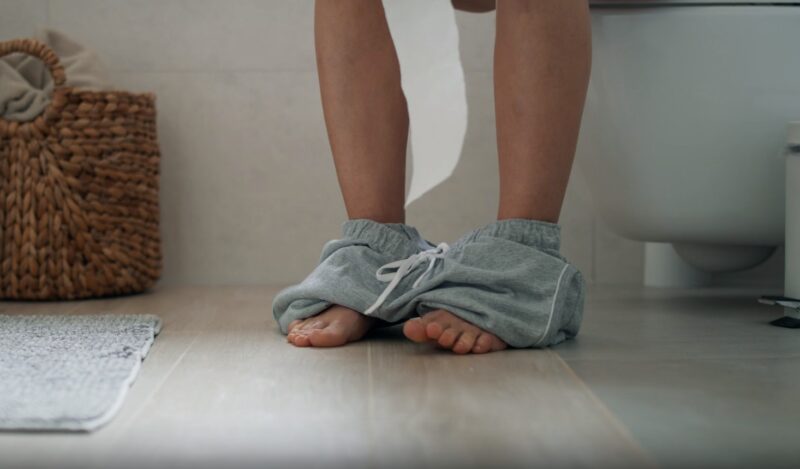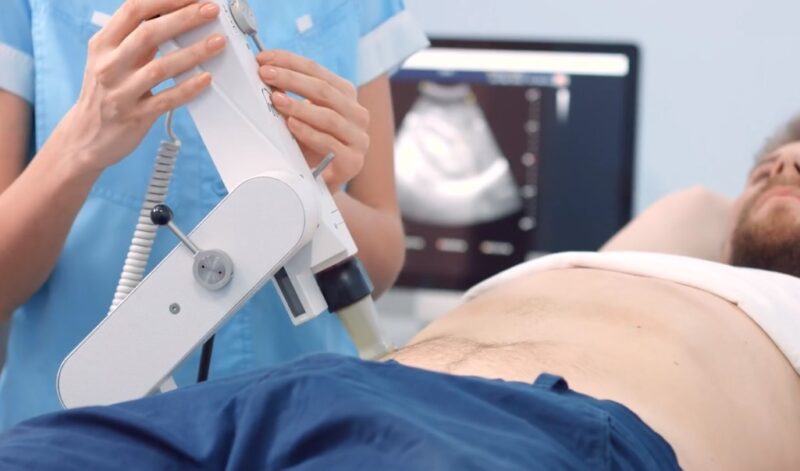Kidney stones, medically known as renal calculi, are hard deposits made of minerals and salts that form inside the kidneys.
They are a common health issue, affecting about one in ten people at some point in their lives. While kidney stones can be extremely painful, they rarely cause permanent damage if identified and treated early.
Recognizing the early signs and symptoms of kidney stones is crucial for timely treatment, which can alleviate pain and prevent complications.
Let us discuss the following elements:
- Kidney stones are a common health issue, affecting roughly 10% of people at some point in their lives.
- The pain associated with kidney stones, known as renal colic, is both severe and sudden, often surprising individuals with its intensity.
- The presence of blood in the urine, whether visible or microscopic, is a strong indicator of kidney stones.
- Kidney stones can cause discomfort during urination.
1. Pain

Pain associated with kidney stones is not only severe but also sudden and unexpected, often catching individuals off guard. This symptom, widely recognized as renal colic, is a direct consequence of the stone’s path through the urinary tract. The pain’s onset is typically acute, as the stone enters the narrow passages of the ureter, creating a physical obstruction.
This blockage prevents urine from flowing freely from the kidney to the bladder, leading to an accumulation of urine behind the stone, which in turn increases pressure within the kidney. This pressure buildup is what triggers the intense pain experienced by sufferers.
The nature of this pain is unique in its ability to come in waves, known as colicky pain, reflecting the body’s attempt to expel the stone naturally. Each wave of pain can last for a few minutes to an hour, with varying periods of relief in between. The pain’s intensity can be so overwhelming that it often requires medical intervention for relief.
As the stone moves down the ureter towards the bladder, the location and intensity of the pain can shift. Initially, the pain may start at one side of the back of the upper abdomen and then move downwards towards the groin as the stone progresses. The radiating nature of the pain further complicates the experience for the individual.
It can extend to the lower abdomen and groin area, affecting a broad region of the body. This widespread pain makes it challenging for sufferers to find a position that offers relief, leading to significant discomfort and distress.
2. Urinary Changes

Urinary changes associated with kidney stones are multifaceted and can significantly impact an individual’s quality of life. These alterations in urination patterns and urine characteristics are direct consequences of the stones’ physical presence within the urinary tract. One of the most common symptoms individuals face is an increased urgency to urinate.
This urgency is often accompanied by a higher frequency of trips to the bathroom, yet, paradoxically, the amount of urine passed each time may be minimal. This frustrating symptom occurs because the stone, depending on its location, can irritate the bladder or obstruct the flow of urine, tricking the body into feeling the need to urinate more often.
The appearance of urine also undergoes noticeable changes, serving as a visual indicator of the underlying issue. Hematuria, or blood in the urine, manifests as pink, red, or brown discoloration, signaling that the stone has caused damage to the urinary tract’s lining.
This bleeding can be microscopic, visible only under a microscope, or gross, clearly noticeable to the naked eye. Beyond color changes, urine may become cloudy, a sign of potential infection or the presence of crystalline materials, and its odor might become markedly unpleasant or stronger than usual, indicating the accumulation of waste products or bacteria.
These urinary changes, while indicative of kidney stones, can indeed mimic symptoms of a urinary tract infection (UTI). Both conditions can present with urgency, frequency, pain during urination, and changes in urine appearance. This similarity often leads to initial misdiagnosis or confusion.
3. Fever and Chills

Fever and chills associated with kidney stones are not merely discomforting symptoms but are indicative of a potentially serious complication: infection within the urinary system. The dynamics of kidney stone formation and movement can inadvertently set the stage for such infections.
When a kidney stone obstructs the urinary tract, it impedes the flow of urine, creating a stagnant pool where bacteria can thrive and multiply. This stagnation not only increases the risk of infection but can also exacerbate the severity of an existing infection, leading to the systemic symptoms of fever and chills.
Fever, the body’s natural response to infection, signifies an ongoing battle against invading pathogens. It is a hallmark sign that the immune system is actively working to eliminate the infection. Chills often accompany fever, as the body’s attempt to increase its core temperature, creating a less favorable environment for the bacteria.
Together, these symptoms serve as critical indicators that an infection has taken hold, necessitating urgent medical intervention. The risk of leaving such infections untreated extends far beyond discomfort. An unchecked infection can escalate, leading to pyelonephritis, a severe kidney infection that can cause permanent kidney damage.
4. Hematuria

Hematuria, the medical term for blood in the urine, serves as a critical sign of underlying issues within the urinary tract, often linked to the presence and movement of kidney stones. This symptom can manifest in two forms:
- Gross hematuria, where the blood is visible, coloring the urine shades of pink, red, or brown.
- Microscopic hematuria, where the blood cells are only detectable under a microscope during a urine analysis.
The occurrence of hematuria is primarily due to the physical trauma inflicted on the urinary tract’s lining by the passing stone. As the stone travels or becomes lodged within the narrow passages of the urinary tract, it can scrape against and irritate the delicate tissues, leading to bleeding.
The presence of blood in the urine, especially when accompanied by pain or discomfort, is a strong indicator of kidney stones. However, hematuria can also be a symptom of other serious conditions, such as urinary tract infections, bladder or kidney infections, and even more concerning, tumors or cancers within the urinary system.
5. Difficulty Urinating

Difficulty urinating, a common symptom associated with kidney stones, significantly impacts the affected individual’s comfort and quality of life. This symptom manifests in various ways, including an uncomfortable sensation of incomplete bladder emptying, the need to strain while urinating, and a general difficulty in initiating urination.
These issues stem from the physical obstruction caused by a kidney stone either in the ureter—the tube connecting the kidney to the bladder—or in the urethra, the duct through which urine exits the body. When a kidney stone lodges itself in these narrow passages, it acts like a dam, restricting the flow of urine.
This obstruction not only makes it challenging to urinate but can also lead to a painful sensation during the act. The pain is often sharp and acute, exacerbated by the body’s efforts to expel urine past the blockage.
Despite the urge to urinate and the feeling of a full bladder, the actual volume of urine passed may be disappointingly small, leading to a cycle of frustration and discomfort.
6. Pain During Urination

Pain during urination, a symptom frequently associated with kidney stones, can significantly affect an individual’s daily life and comfort. This discomfort is particularly pronounced when kidney stones navigate the delicate areas of the urinary tract, such as the ureter-bladder junction or the urethra.
The sensation is often described as a sharp, burning pain, reminiscent of the distress caused by a urinary tract infection (UTI). However, while UTIs cause pain due to inflammation and infection, the pain from kidney stones is mechanical in nature, resulting from the physical presence and movement of the stone.
As kidney stones move closer to the bladder and begin their passage through the urethra, they can irritate and scrape against the mucosal linings of these structures. This irritation is what leads to the painful sensations experienced during urination.
The urethra, being narrower than the ureters, can cause significant discomfort when a stone is passing through it. The pain can vary in intensity, often peaking as the stone moves through the narrowest parts of the urinary tract.
This symptom, especially when occurring alongside other indicators of kidney stones difficulty urinating, or episodes of severe pain (renal colic), warrants immediate medical attention.
A thorough evaluation, typically involving a combination of physical examination, urine tests, and imaging techniques like ultrasound or CT scans, can help determine the stone’s size, shape, and precise location within the urinary tract.
FAQs
Why do kidney stones hurt more at night?
Kidney stones may hurt more at night due to decreased physical activity, which can lead to a buildup of urine and increased pressure on the kidneys. Lying down can also change the way the body handles pain, making it more noticeable. Additionally, there are fewer distractions at night, making the pain feel more intense.
What’s more painful than giving birth?
Pain is subjective and varies from person to person. However, some conditions reported to be as painful or more painful than childbirth include cluster headaches, severe burns, and certain chronic pain conditions like fibromyalgia or neuropathic pain. Kidney stones are also often compared to childbirth in terms of pain intensity.
Why has my kidney stone pain stopped?
Kidney stone pain may stop if the stone moves to a position where it no longer blocks the flow of urine, reducing pressure and irritation in the kidney and urinary tract. It’s also possible the stone has passed out of the body with urine.
Do kidney stones cause gas?
Kidney stones themselves do not directly cause gas. However, the pain and discomfort from kidney stones can lead to nausea and changes in eating habits, which might indirectly affect digestion and lead to gas. Additionally, stress and anxiety from dealing with kidney stones can impact gastrointestinal function, potentially leading to symptoms like bloating and gas.
Summary
Recognizing the signs and symptoms of kidney stones is crucial for timely diagnosis and treatment. While the experience of having kidney stones can be painful and distressing, most stones can pass on their own with adequate hydration and pain management.
Some situations may require medical or surgical intervention to remove or break up the stones. If you experience any combination of these symptoms, especially severe pain, changes in urination, or signs of infection, seek medical attention promptly. Early treatment can alleviate pain, prevent complications, and ensure a quicker recovery.
